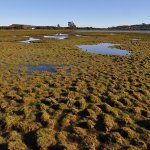In California’s Eastern Sierra, at an elevation of 6,383 feet, is Mono Lake – a WHSRN Site of International Importance for hosting over 100,000 shorebirds and 10-14% of the world’s population of Wilson’s Phalarope (Phalaropus tricolor). Microscopic algae in the lake feeds trillions of brine shrimp and alkali flies, which in turn provide food for over one million waterbirds.
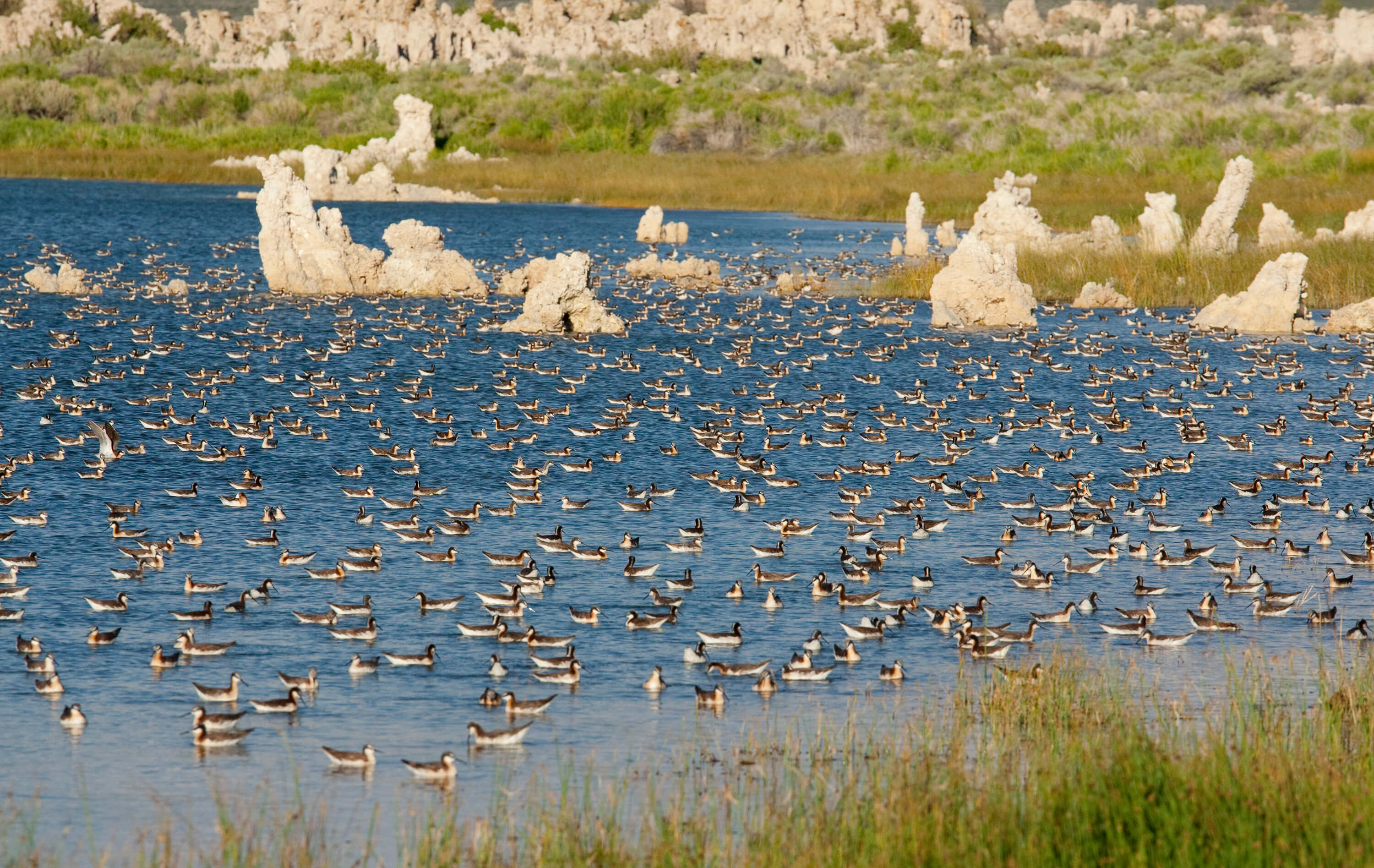
Wilson’s Phalaropes (Phalaropus tricolor) swimming and foraging at Mono Lake. Photo: Marie Read.
But the water level was not always at this elevation. Before 1941, its elevation was 6,417 feet. In 1941, Los Angeles Department of Water and Power (LADWP) began diverting water from Mono Lake’s freshwater tributary streams for use in this southern California city. The constant, growing water demands of the City of Los Angeles led to a 45 foot drop of the lake, leaving it at 6,372 feet by the early 1980s. Toxic dust clouds from wind blowing across the exposed lakebed were common. The increase in salinity in the water impacted the growth of algae. Numbers of brine shrimp and alkali flies declined. Shorebirds and other water birds were no longer able to find the resources they needed.
Mono Lake Committee (Committee), a nonprofit founded in 1978 to protect and restore Mono Lake, continues to steward the lake through restoration, policy, education, and science. In 1994, after over a decade of litigation, the California State Water Resources Control Board determined that LADWP must restore flows to the freshwater streams and allow the lake to rise to the management level of 6,392 feet. Recognizing that Los Angeles still needs water, the restoration rules in place at Mono Lake allow for some water to be diverted to the city in most years, where funding secured by the Committee helped implement widespread water conservation measures to increase the city’s water efficiency.
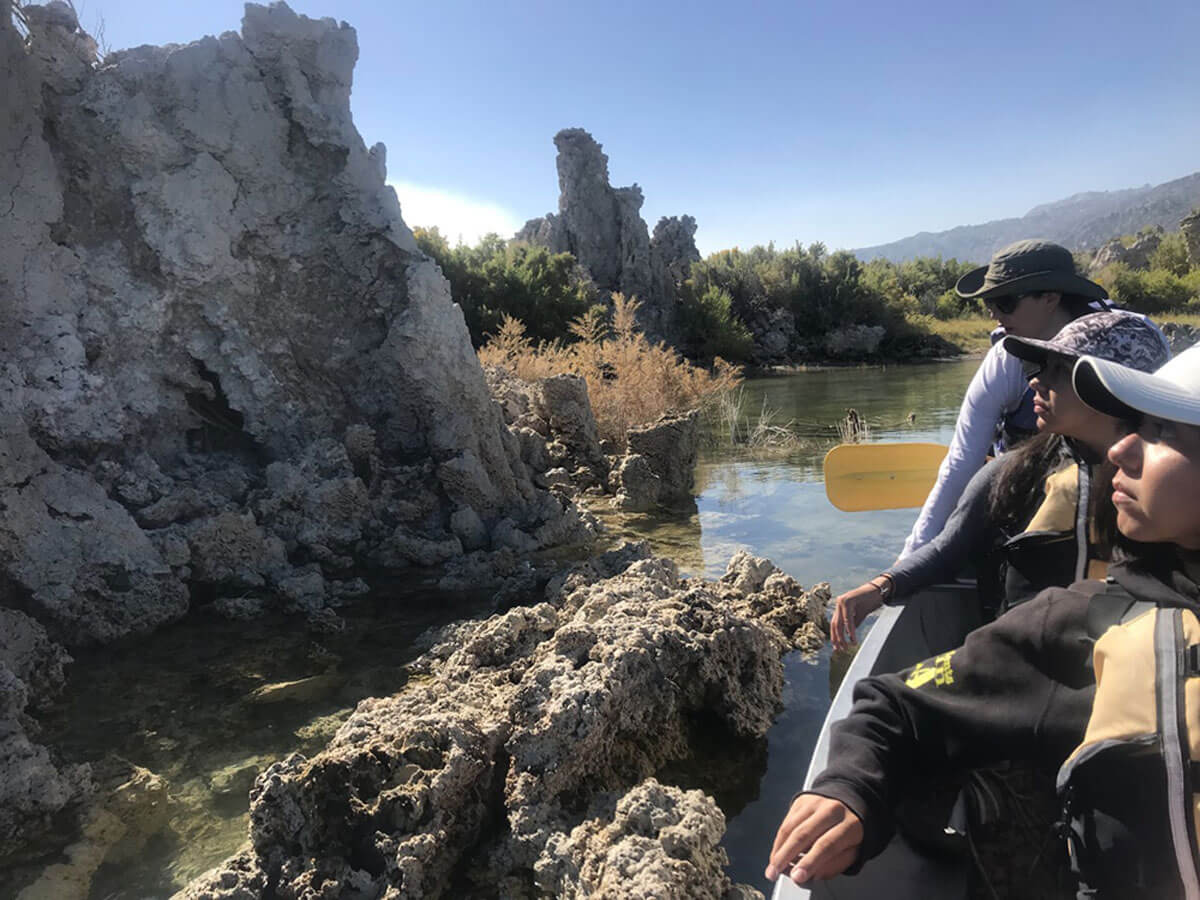
Outdoor Education Center students canoe on Mono Lake as part of their week-long visit to the Mono Basin. Photo: Mono Lake Committee, monolake.org.
Meanwhile, alongside this advocacy and conservation effort, the Committee has been working to connect the next generation of Los Angeles water users to Mono Lake. The story of the Committee’s Mono Basin Outdoor Education Center began 25 years ago in partnership with a group called Madres de Este Los Angeles, Santa Isabel (MELASI), a coalition of women fighting environmental justice issues in their community. In the early 1990s, MELASI worked to retrofit homes in Los Angeles with ultra-low flow toilets as part of a city-wide water conservation program. During this time they recognized that the Mono Basin was part of their watershed. This prompted MELASI to first visit the Mono Basin and groups from Los Angeles have been coming ever since.
Many years later, the program has served thousands of students who have participated in an immersive week-long experience. The majority of participants still come from Los Angeles, many from marginalized and underserved communities. Participants come from many different backgrounds, including school groups, scouting troops, environmental justice activists, and more.
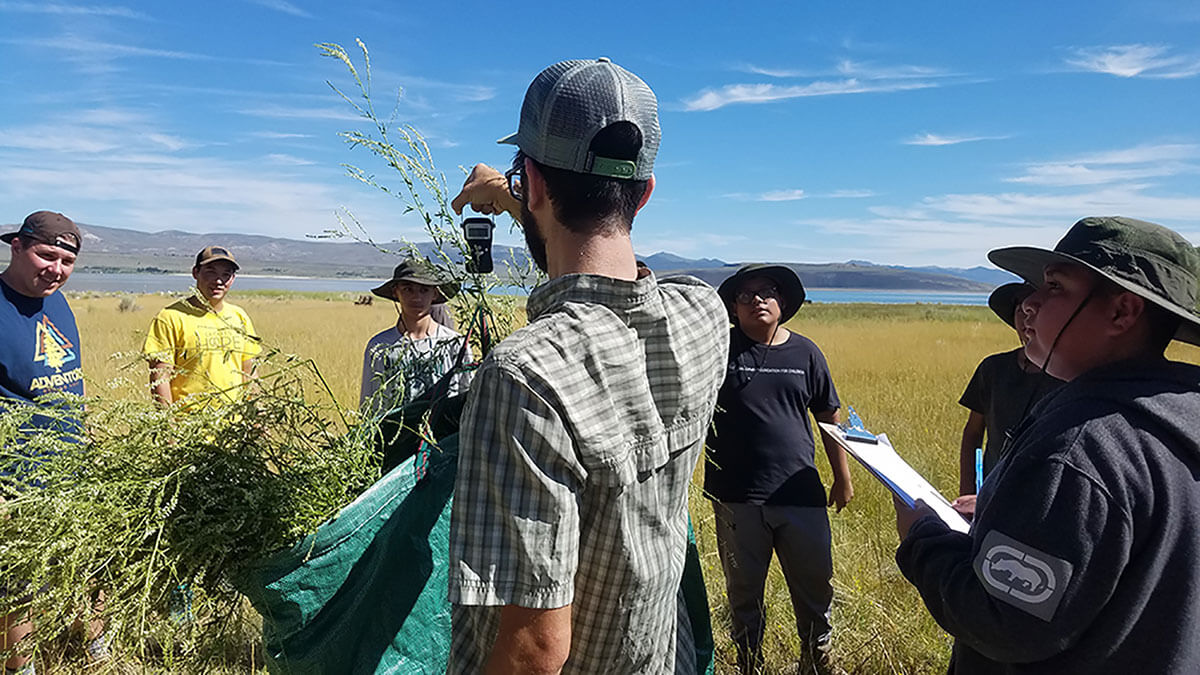
Outdoor Education Center students weigh the amount of invasive white sweet clover they pulled during a service project at Mono Lake. Photo: Mono Lake Committee, monolake.org.
Their week at Mono Lake includes hikes, visits to the lake, birdwatching (Including those spinning Wilson’s Phalaropes!), service projects, and a trip to the Los Angeles Aqueduct to see a source of their water 350 miles north of their home. Many participants have never left Los Angeles, slept outside, or seen stars. Each new experience is an opportunity for growth and reflection.
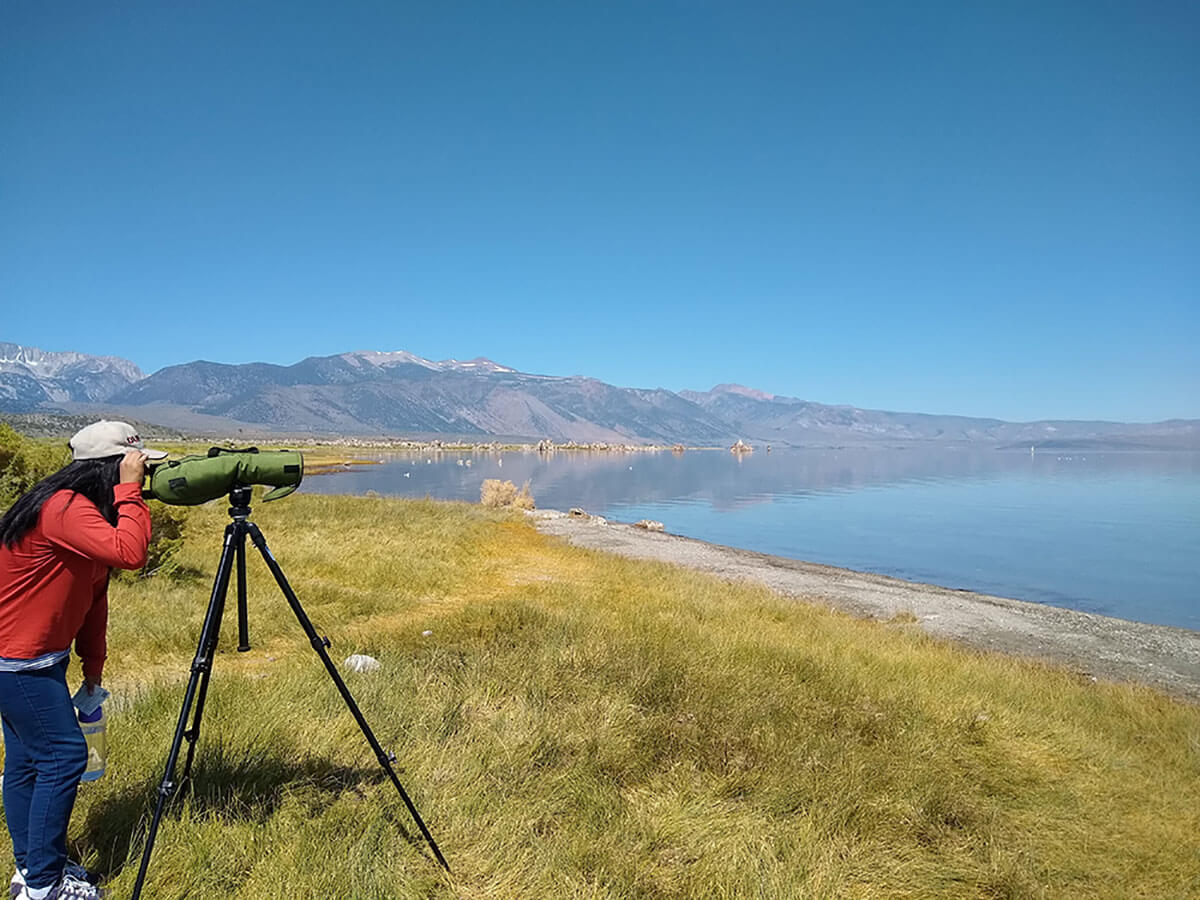
An Outdoor Education Center student birding along Mono Lake’s south shore. Photo: Mono Lake Committee, monolake.org.
In a comparison of pre- and post- surveys, participants show an increased positive response to water-minded questions, indicating an increase in water consciousness. Rose Nelson, Education Director for the Committee, shared that one of the most important experiences for the participants is the service project. The hands-on-experience of planting trees or pulling invasive plants inspires participants to return home and find small or BIG actions that will support their communities or maybe even Mono Lake. Bolstering this inspiration, the story of how Mono Lake was saved runs through the whole week: people stood up and said this place is important.
Annually, the Outdoor Education Center hosts over 400 students, leaders, and docents. As Nelson stated, “Everyone deserves the opportunity to have this experience, to connect with nature, to connect with their water. We will need all perspectives for conservation success. You never know where the next great idea will come from.” Participants in the program have gone on to have water conservation careers, become hydrogeologists, and to fight environmental justice issues in their own community. Many of these participants cite this program as a formative component on their path.
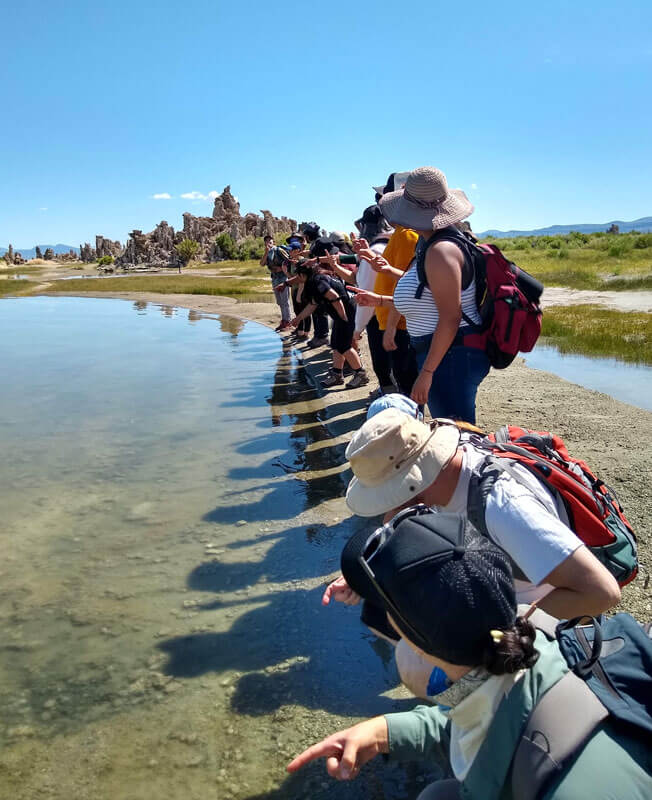
Outdoor Education Center students learn about the chemistry of Mono Lake, in part by tasting its salty, alkaline water. Photo: Mono Lake Committee, monolake.org.
Immediate conservation needs must be solved with immediate actions. However, working in parallel with management, restoration, and advocacy, we must also invest in education. Shifting values and building a constituency of support can take decades, even multiple generations. At most WHSRN sites, it is a daunting task. But the experience of Mono Lake reminds us that it only takes one person, inspired by a lake in the mountains with one million waterbirds, to start teaching the next generation about their connection to the environment.
For more information about the Mono Lake Committee’s education program, contact Rose Nelson, Education Director at rose@monolake.org.






